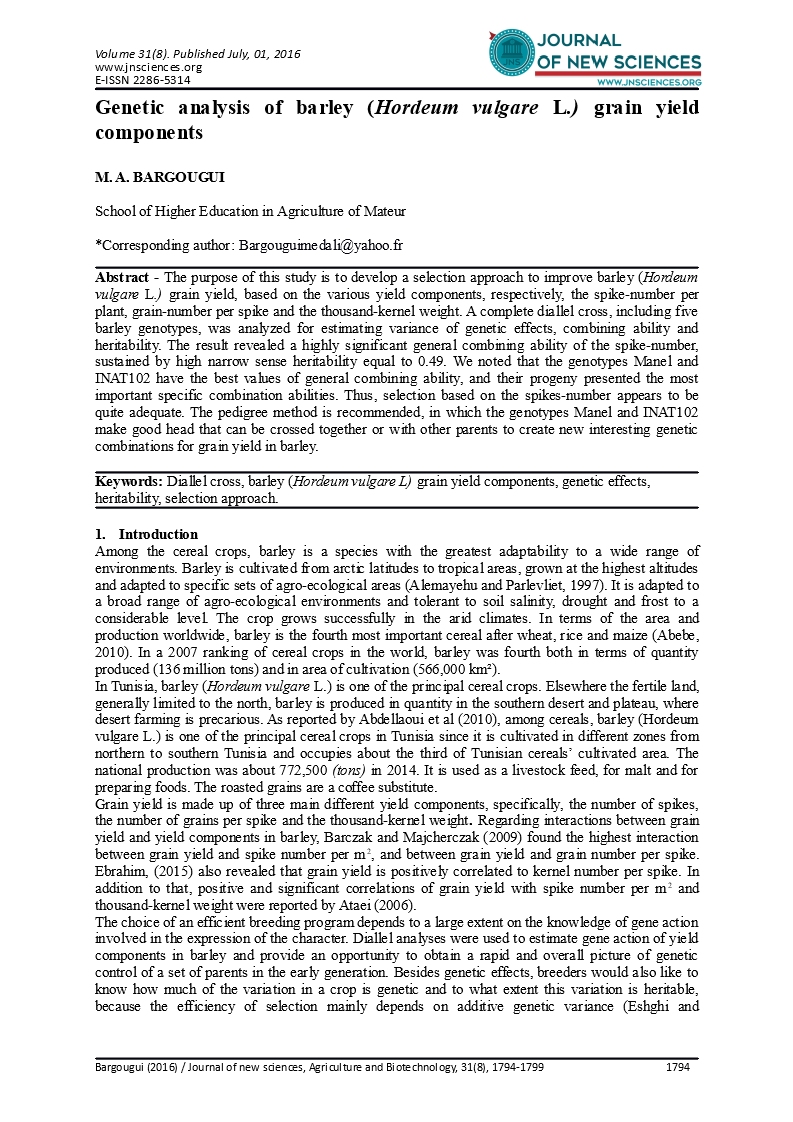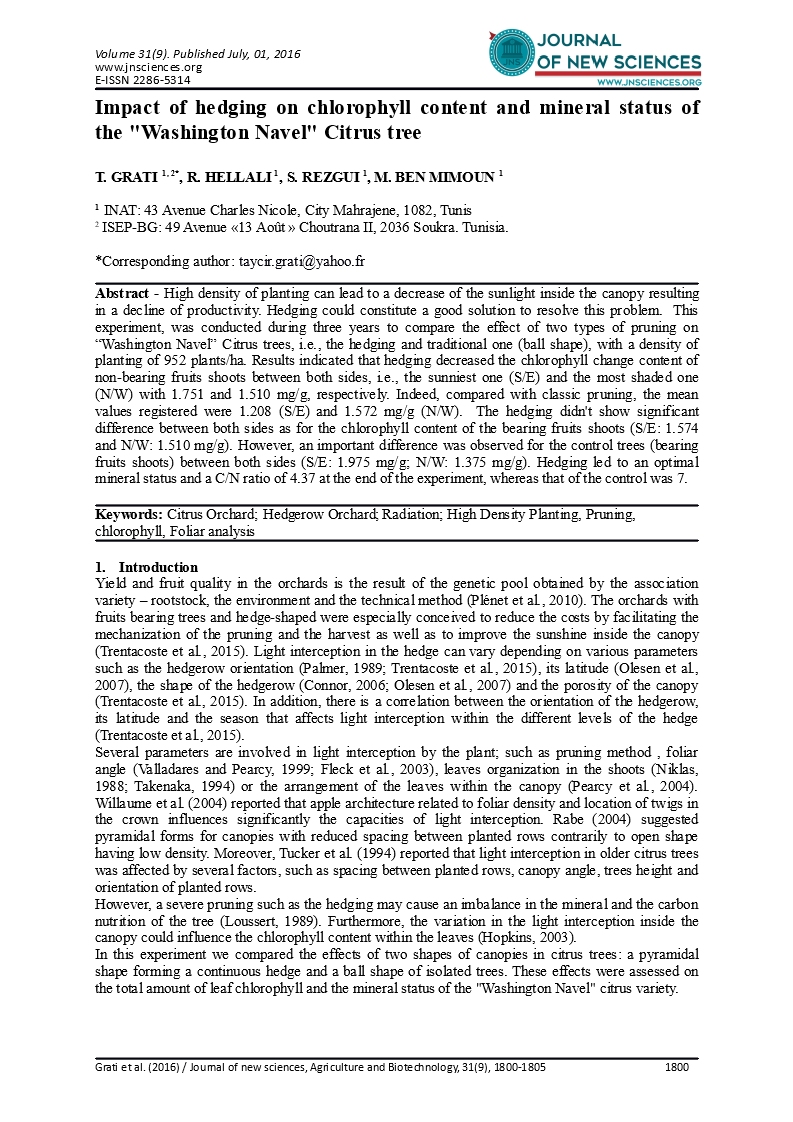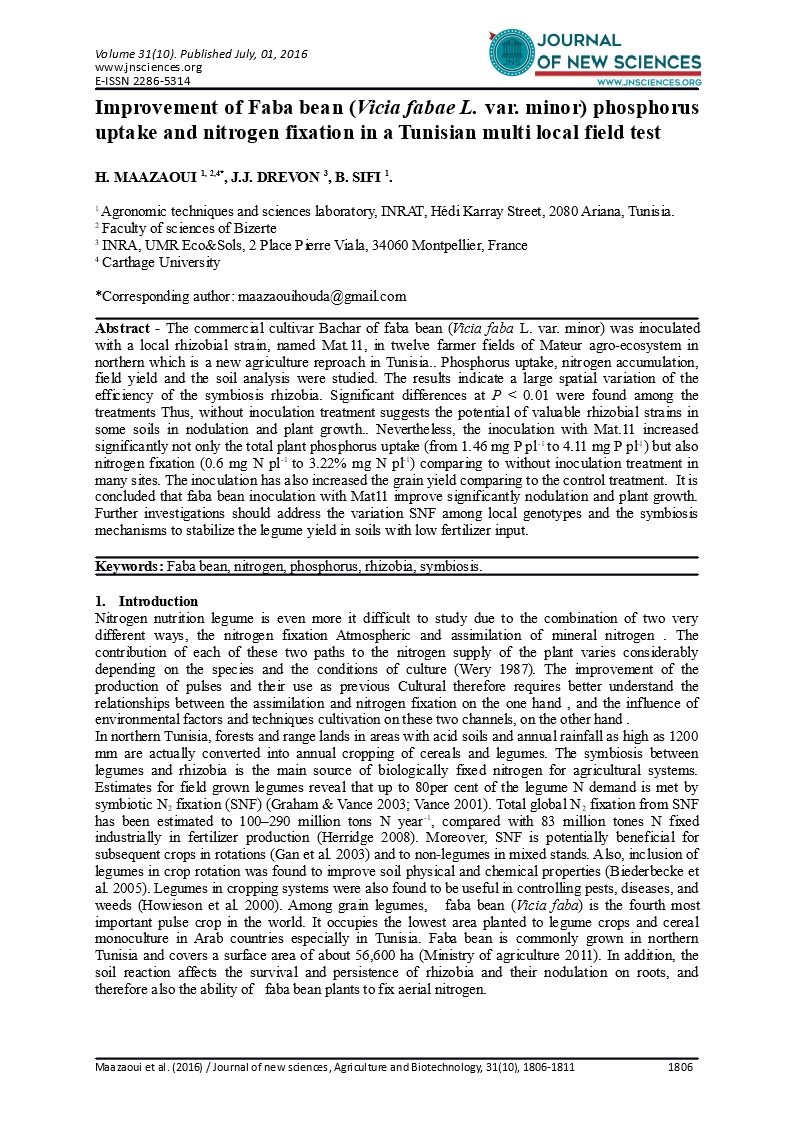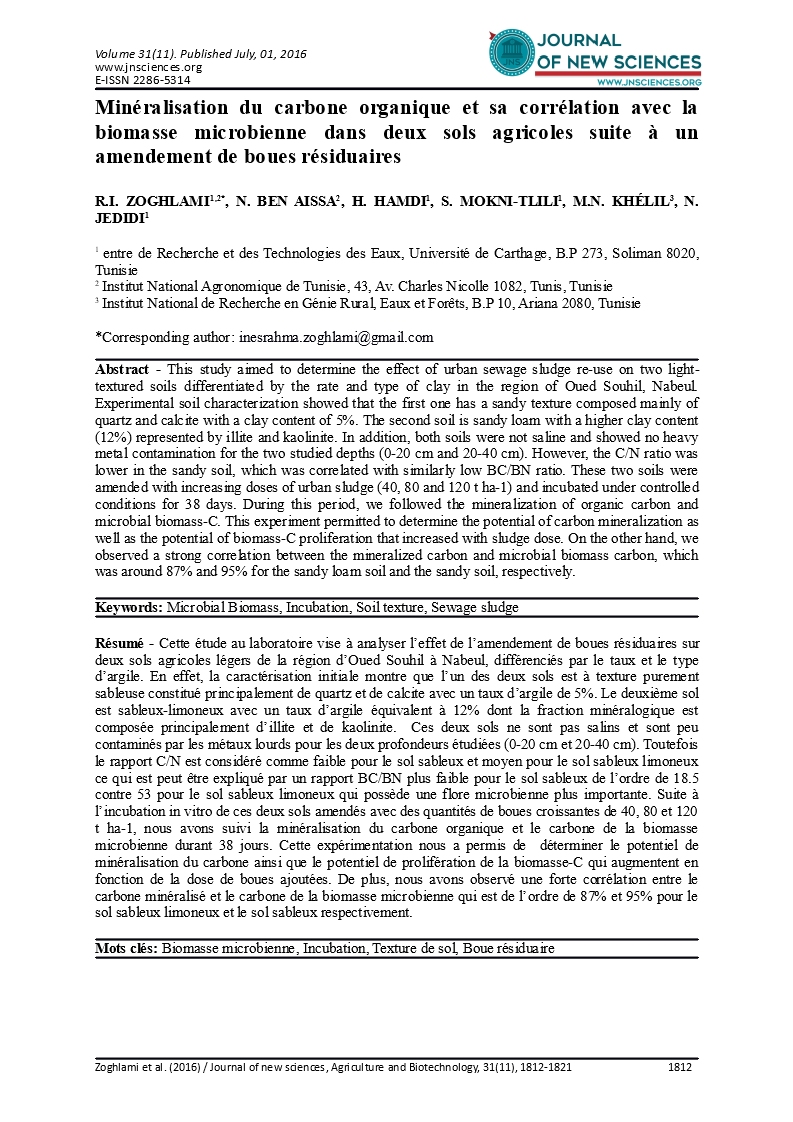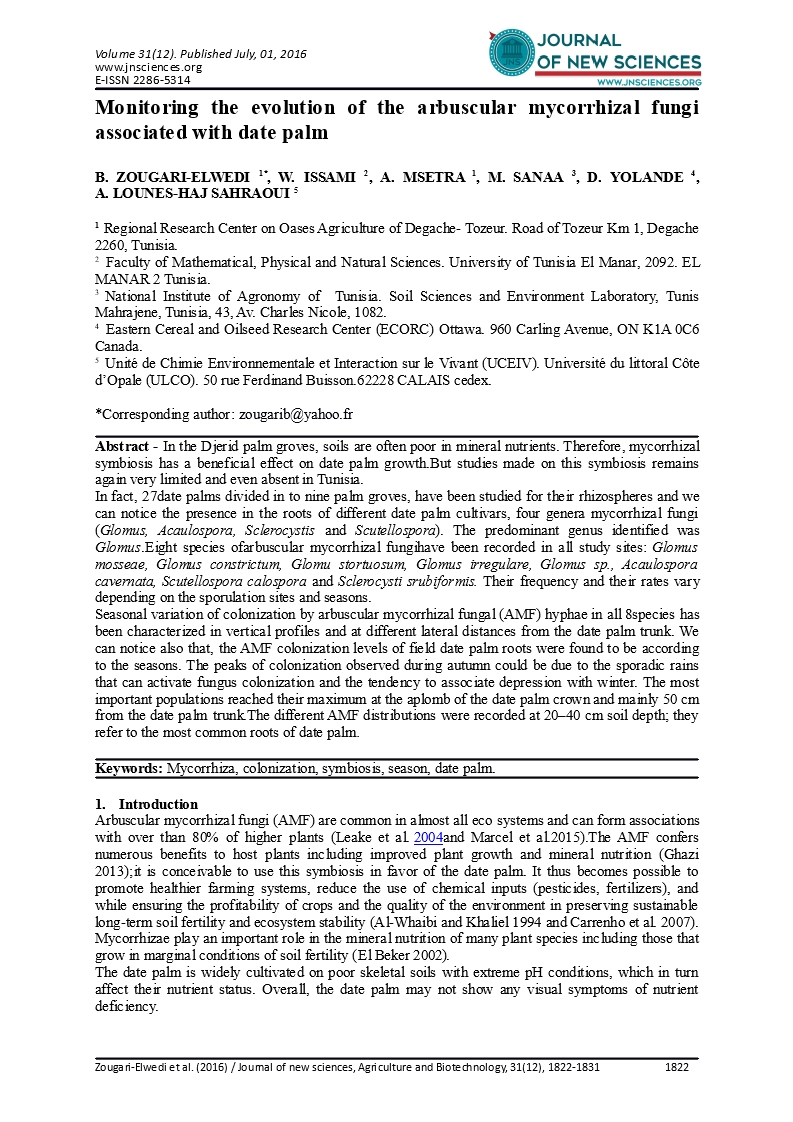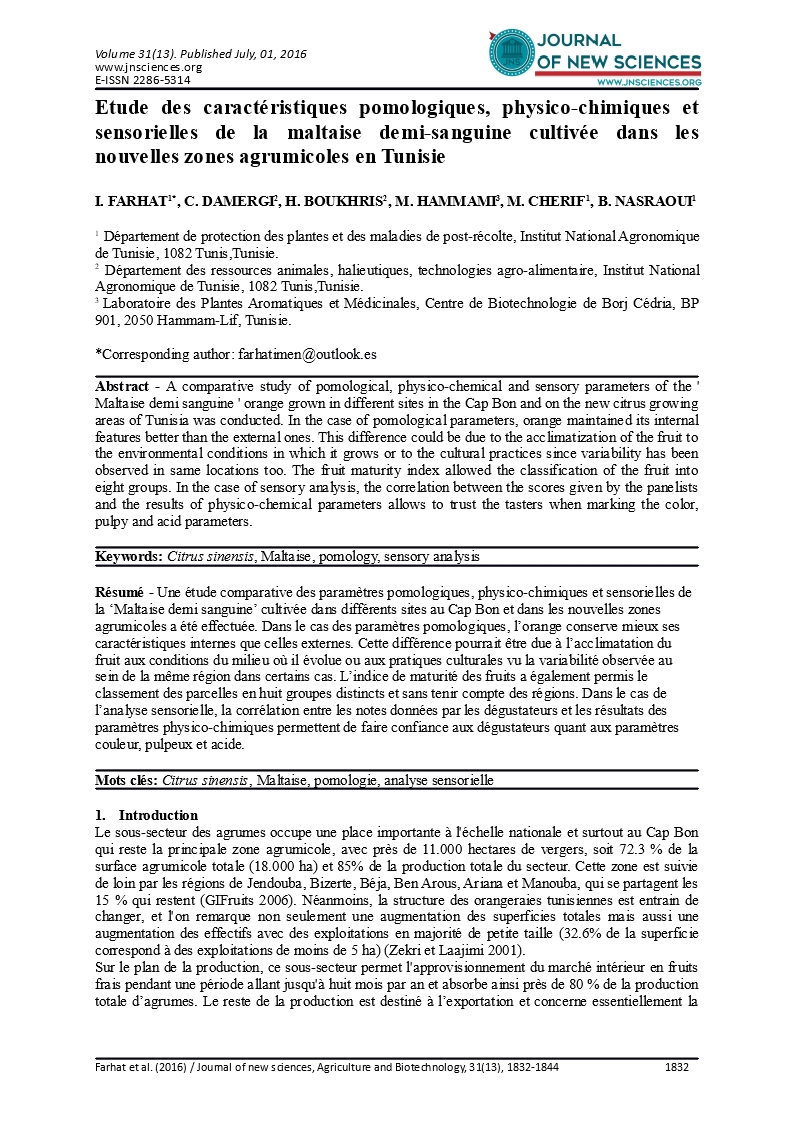R.I. Zoghlami1,2*
N. Ben Aissa2
H. Hamdi1
S. Mokni-Tlili1
M.N. Khélil3
N. Jedidi1
1 Centre de Recherche et des Technologies des Eaux, Université de Carthage, B.P 273, Soliman 8020, Tunisie
2 Institut National Agronomique de Tunisie, 43, Av. Charles Nicolle 1082, Tunis, Tunisie
3 Institut National de Recherche en Génie Rural, Eaux et Forêts, B.P 10, Ariana 2080, Tunisie
Abstract - This study aimed to determine the effect of urban sewage sludge re-use on two light-textured soils differentiated by the rate and type of clay in the region of Oued Souhil, Nabeul. Experimental soil characterization showed that the first one has a sandy texture composed mainly of quartz and calcite with a clay content of 5%. The second soil is sandy loam with a higher clay content (12%) represented by illite and kaolinite. In addition, both soils were not saline and showed no heavy metal contamination for the two studied depths (0-20 cm and 20-40 cm). However, the C/N ratio was lower in the sandy soil, which was correlated with similarly low BC/BN ratio. These two soils were amended with increasing doses of urban sludge (40, 80 and 120 t ha-1) and incubated under controlled conditions for 38 days. During this period, we followed the mineralization of organic carbon and microbial biomass-C. This experiment permitted to determine the potential of carbon mineralization as well as the potential of biomass-C proliferation that increased with sludge dose. On the other hand, we observed a strong correlation between the mineralized carbon and microbial biomass carbon, which was around 87% and 95% for the sandy loam soil and the sandy soil, respectively.
Keywords: Microbial Biomass, Incubation, Soil texture, Sewage sludge
Résumé - Cette étude au laboratoire vise à analyser l’effet de l’amendement de boues résiduaires sur deux sols agricoles légers de la région d’Oued Souhil à Nabeul, différenciés par le taux et le type d’argile. En effet, la caractérisation initiale montre que l’un des deux sols est à texture purement sableuse constitué principalement de quartz et de calcite avec un taux d’argile de 5%. Le deuxième sol est sableux-limoneux avec un taux d’argile équivalent à 12% dont la fraction minéralogique est composée principalement d’illite et de kaolinite. Ces deux sols ne sont pas salins et sont peu contaminés par les métaux lourds pour les deux profondeurs étudiées (0-20 cm et 20-40 cm). Toutefois le rapport C/N est considéré comme faible pour le sol sableux et moyen pour le sol sableux limoneux ce qui est peut être expliqué par un rapport BC/BN plus faible pour le sol sableux de l’ordre de 18.5 contre 53 pour le sol sableux limoneux qui possède une flore microbienne plus importante. Suite à l’incubation in vitro de ces deux sols amendés avec des quantités de boues croissantes de 40, 80 et 120 t ha-1, nous avons suivi la minéralisation du carbone organique et le carbone de la biomasse microbienne durant 38 jours. Cette expérimentation nous a permis de déterminer le potentiel de minéralisation du carbone ainsi que le potentiel de prolifération de la biomasse-C qui augmentent en fonction de la dose de boues ajoutées. De plus, nous avons observé une forte corrélation entre le carbone minéralisé et le carbone de la biomasse microbienne qui est de l’ordre de 87% et 95% pour le sol sableux limoneux et le sol sableux respectivement.
Mots clés: Biomasse microbienne, Incubation, Texture de sol, Boue résiduaire
Read more
